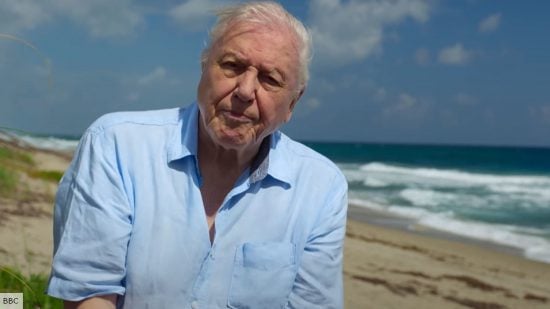David Attenborough spoke about the Cordyceps infection, which is the basis for the story in The Last of Us TV series, in a nature documentary. Attenborough is something rare in the UK: an uncontroversial and universally beloved national treasure.
The scientist-turned-broadcaster is known across the world for lending his voice, and his insight, to some of the best nature documentaries ever made. His TV career has spanned decades, during the course of which he became best known for his ground-breaking works like Life of Earth, The Blue Planet, and Planet Earth. Each provides a look at the biological wonder of the natural world, dedicated to shining a light on the diversity of ecosystems and the plants and animals within them.
It was within one of these, Planet Earth, that Attenborough spoke about the terrifying parasitic fungus Cordyceps. While speaking about the lives of bullet ants, he explained, “Jungle ants don’t have it all their own way. These bullet ants are showing some worrying symptoms. Spores from a parasitic fungus called Cordyceps have infiltrated their bodies and their minds.”
He continues, “Its infected brain directs this ant upwards, then, utterly disorientated it grips a stem with its mandibles. Those afflicted that are discovered by other workers are taken away and dumped far away from the colony. It seems extreme, but this is the reason why: like something from science fiction, the fruiting body of the Cordyceps erupts from the ant’s head.”
Well, quite. “It can take three weeks to grow, and when finished the deadly spores will burst from its grip. Then any ant in the vicinity will be in serious risk of death. The fungus is so virulent it can wipe out whole colonies of ants. And, it’s not just ants that fall victim to this killer: there are literally thousands of different types of Cordyceps fungi, and remarkably each specialises in just one species.” You can check out Attenborough’s narration, and the chilling photography that accompanies it below:

Anyone who’s seen the new HBO thriller series The Last of Us, adapted from a videogame of the same name, will now recognise the images of fungus pushing its way out of an organic body. In the horror series, the Cordyceps infection discussed by Attenborough in relation to ants has infected humans, and like with the ants, it takes over their brain turning them into terrifying, mushroom-sprouting zombies.
Attenborough’s documentary is from 2006, and so predates both The Last of Us videogame and the new drama series. And, it was Planet Earth’s depiction of Cordyceps that actually inspired the development of the plot of The Last of Us.
In an interview with GamesBeat from 2013, Neil Druckmann (the co-creator of The Last of Us) explained that it was the Attenborough documentary that helped them to create their story. He said “the BBC show we were ripping off is Planet Earth, where they talked about the Cordyceps fungus and how it affects insects.”
For more on The Last of Us, check out our guides to The Last of Us cast, Kathleen, and does Cordyceps start in Jakarta and bloaters. The Last of Us is available on NOW in the UK, and HBO Max in the US.
